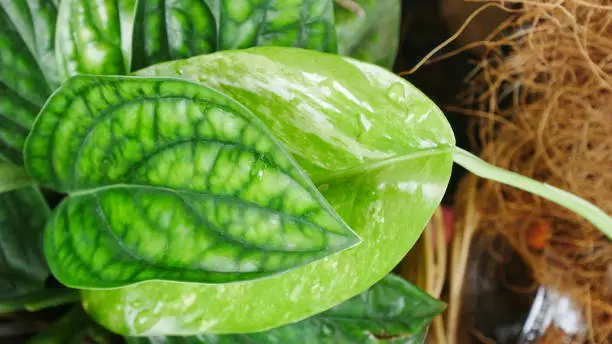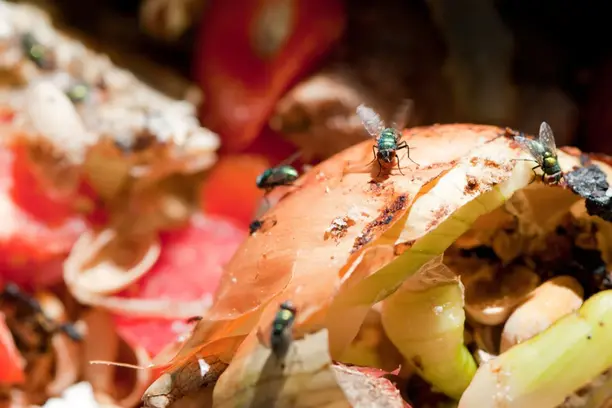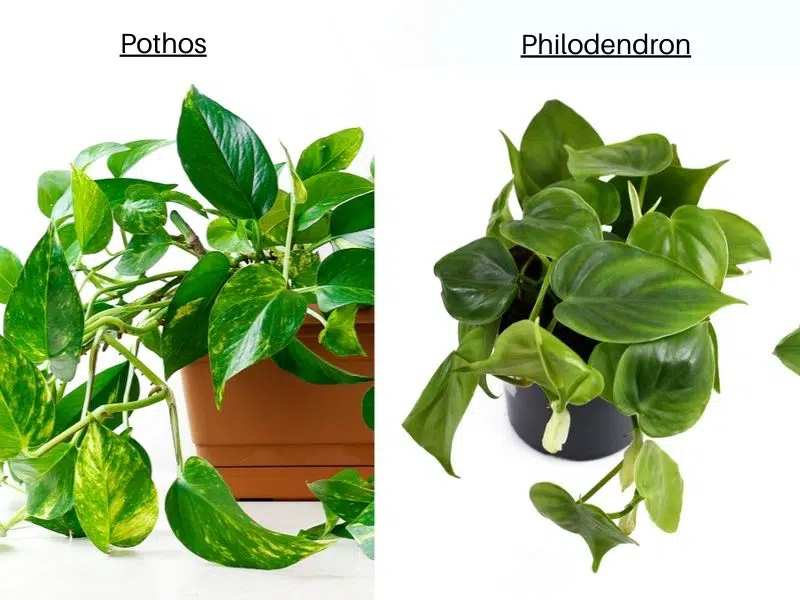Spider plants are a popular choice for indoor and outdoor gardening due to their unique foliage and easy maintenance. With over 200 varieties of spider plants, there are many different types to choose from. Some of the most common types include the classic green and white variegated spider plant, the solid green spider plant, and the curly spider plant.
This plant features long, narrow leaves with white stripes running down the center. This type of spider plant is easy to care for and can thrive in a variety of lighting conditions.
Another popular type of spider plant is the solid green spider plant, which is also known as the Chlorophytum comosum ‘Vittatum’. This variety of spider plant has solid green leaves and is known for its ability to purify the air. It is a great choice for those who want a low-maintenance plant that can help improve the air quality in their home or office.
Overall, spider plants are a great choice for those who want a low-maintenance plant with unique foliage. With so many different types of spider plants to choose from, there is sure to be one that fits your style and needs.
Understanding Spider Plants
Historical Background
Spider plants (Chlorophytum comosum) are a popular houseplant that have been cultivated for centuries. Native to South Africa, they were first introduced to Europe in the late 1700s and have since become a common sight in homes and offices around the world.
Basic Characteristics
Spider plants are a perennial, evergreen plant that belongs to the Asparagaceae family. They are known for their long, narrow leaves that grow in a rosette pattern and their small, white flowers that bloom in the summer. They are easy to care for and can thrive in a variety of environments, making them a popular choice for beginner gardeners.
Growth and Propagation
Spider plants are fast-growing and can reach up to 2 feet in length. They prefer bright, indirect light and well-draining soil. They can be propagated by dividing the plant at the roots or by planting the plantlets that grow on the ends of their long, trailing stems.
Spider plants are also known for their air-purifying qualities. They are able to remove harmful toxins from the air, making them a great addition to any indoor space.
In summary, spider plants are a popular and easy-to-care-for houseplant that have been cultivated for centuries. They are evergreen perennials that belong to the Asparagaceae family and are known for their long, narrow leaves and small, white flowers. They are fast-growing and can be propagated easily, and they also have air-purifying qualities.
Popular Varieties of Spider Plants
Spider plants are a popular choice for indoor and outdoor gardening due to their hardiness and easy maintenance. There are several varieties of spider plants available, each with its unique characteristics. In this section, we will discuss some of the most popular varieties of spider plants.
Chlorophytum comosum ‘Variegatum’
This is one of the most common varieties of spider plants. It has green and white striped leaves, which make it an attractive addition to any garden. It is easy to care for and can thrive in a variety of conditions.
Chlorophytum comosum ‘Ocean’
The ‘Ocean’ spider plant has green and white variegated leaves with a slight curl at the tips. It is a fast-growing plant that can quickly fill up a space. It prefers bright, indirect light and needs to be watered regularly.
Chlorophytum comosum ‘Bonnie’
The ‘Bonnie’ spider plant has green and white variegated leaves that are narrower than the ‘Variegatum’ variety. It is a compact plant that grows well in small spaces. It prefers bright, indirect light and needs to be watered regularly.
Chlorophytum comosum ‘Vittatum’
The ‘Vittatum’ spider plant has green leaves with a white stripe down the center. It is a hardy plant that can thrive in a variety of conditions. It prefers bright, indirect light and needs to be watered regularly.
Chlorophytum comosum ‘Curly’
The ‘Curly’ spider plant has green and white variegated leaves that curl at the tips. It is a compact plant that grows well in small spaces. It prefers bright, indirect light and needs to be watered regularly.
Chlorophytum laxum ‘Zebra’
The ‘Zebra’ spider plant has green and white striped leaves that are narrower than the ‘Variegatum’ variety. It is a hardy plant that can thrive in a variety of conditions. It prefers bright, indirect light and needs to be watered regularly.
Chlorophytum amaniense ‘Fire Flash’
The ‘Fire Flash’ spider plant has green leaves with red edges. It is a hardy plant that can thrive in a variety of conditions. It prefers bright, indirect light and needs to be watered regularly.
Chlorophytum viridescens ‘Hawaiian’
The ‘Hawaiian’ spider plant has green and white variegated leaves that are wider than the ‘Vittatum’ variety. It is a hardy plant that can thrive in a variety of conditions. It prefers bright, indirect light and needs to be watered regularly.
In addition to these popular varieties, there are also several other spider plant types available, such as the ‘Golden Glow,’ ‘Reverse Spider Plant,’ and ‘Ribbon Plant.’ With their hardiness and easy maintenance, spider plants are an excellent choice for any gardener looking to add some greenery to their indoor or outdoor space.
Care and Maintenance of Spider Plants
Spider plants are easy to care for and maintain, making them a popular choice for indoor and outdoor gardens. Here are some tips on how to keep your spider plants healthy and thriving:
Soil and Potting
Spider plants prefer well-draining soil, so it’s important to use a potting mix that allows for proper drainage. A mix of peat moss, perlite, and vermiculite is a good choice. When repotting, choose a pot that is one size larger than the current one to allow for growth.
Sunlight and Temperature
Spider plants thrive in bright indirect light, so it’s best to place them near a window that receives filtered sunlight. They can also tolerate some direct sunlight, but too much can cause the leaves to burn. Spider plants prefer temperatures between 60-75°F (15-24°C).
Watering and Humidity
Spider plants prefer to be kept consistently moist, but not waterlogged. Water once a week or when the top inch of soil feels dry to the touch. They also appreciate high humidity, so misting the leaves regularly can help keep them healthy.
Propagation and Fertilization
Spider plants are easy to propagate by dividing the plant at the roots and repotting the new sections. Fertilize once a month with a balanced fertilizer during the growing season (spring and summer).
Outdoor Care
Spider plants can also be grown outdoors in shaded areas with well-drained soil. They can tolerate temperatures down to 40°F (4°C), but it’s best to bring them indoors if temperatures drop below freezing.
By following these simple care and maintenance tips, your spider plants will continue to grow and thrive for years to come.
Benefits and Uses of Spider Plants
Spider plants are popular ornamental plants that are easy to care for and have numerous benefits. Here are some of the benefits and uses of spider plants:
Air Purification
Spider plants are known for their ability to purify the air. According to NASA, spider plants can remove up to 90% of the toxins in the air within just two days. This makes spider plants an excellent choice for indoor spaces, such as living rooms or offices, where air quality can be a concern.
Ground Cover
Spider plants can also be used as ground cover in outdoor spaces. They are hardy plants that can thrive in a variety of conditions, making them a great choice for landscaping projects.
Ornamental Plant
Spider plants are also popular as ornamental plants. They have long, slender leaves that can grow up to 3 feet long, and they produce small white flowers that can add a touch of elegance to any room.
Easy to Care For
Spider plants are low maintenance and easy to care for, making them a great choice for beginners or those who don’t have a lot of time to devote to plant care. They can tolerate a wide range of conditions, including low light and infrequent watering.
In conclusion, spider plants have numerous benefits and uses, including air purification, ground cover, and ornamental purposes. They are also easy to care for, making them a great choice for anyone looking to add some greenery to their living space.
Identifying Different Spider Plants
Spider plants are a popular choice for indoor and outdoor gardening due to their ease of care and attractive foliage. There are several varieties of spider plants, each with distinct characteristics that make them easy to identify.
One of the most common types of spider plants is the Chlorophytum comosum. This plant has long, thin, green leaves that arch gracefully from the center of the plant. It is known for its white stripe that runs down the center of each leaf, giving it a striking appearance. This plant is often grown in hanging baskets, where its trailing foliage can be appreciated.
Another popular variety of spider plants is the Variegatum. This plant has variegated leaves with white edges that stand out against the glossy green foliage. Its arching leaves make it an attractive addition to any room.
To identify a spider plant, look for its characteristic foliage. Spider plants have long, thin leaves that grow in a rosette pattern from the center of the plant. The leaves may be green, variegated, or have white stripes or edges.
Propagating spider plants is easy. They produce baby plants, or “spiderettes,” that can be removed from the parent plant and potted on their own. Spider plants also produce flowers, which can be used to create new plants.
Spider plants come in a variety of colors, including green, white, and variegated. They are versatile plants that can be grown in hanging baskets, on windowsills, or in pots on the floor. With their attractive foliage and easy care requirements, spider plants are a great choice for any gardener.
Challenges in Growing Spider Plants
Spider plants are known for their hardiness and ease of growth, but like any plant, they can face challenges. Here are some of the common challenges that growers may encounter when growing spider plants.
Small Growth
One of the most common challenges when growing spider plants is small growth. This can be caused by a variety of factors, including poor soil quality, lack of sunlight, or overwatering. To promote healthy growth, it is important to ensure that the soil is well-draining and that the plant receives adequate sunlight. Overwatering should also be avoided, as it can lead to root rot and stunted growth.
Offshoots and Pups
Spider plants are known for their ability to produce offshoots and pups, which can be propagated to create new plants. However, if left unchecked, these offshoots and pups can drain resources from the parent plant and stunt its growth. To prevent this, it is important to regularly remove and propagate the offshoots and pups.
Curly Spider Plants
Curly spider plants are a popular variety of spider plant, but they can be more challenging to grow than other varieties. One of the most common challenges with curly spider plants is leaf curl, which can be caused by a variety of factors, including overwatering, low humidity, or pests. To prevent leaf curl, it is important to ensure that the plant is not overwatered and that it receives adequate humidity.
Bonnie Plant
Bonnie spider plants are a popular variety of spider plant, known for their variegated leaves and fast growth. However, these plants can face challenges when grown in low light conditions, which can cause the leaves to lose their variegation and become more green. To ensure that Bonnie spider plants maintain their variegation, it is important to provide them with adequate sunlight.
Spider Ivy
Spider ivy is a trailing variety of spider plant, known for its long, thin leaves. While this plant is relatively easy to grow, it can face challenges when grown in low-light conditions, which can cause the leaves to become more green and less variegated. To promote healthy growth and variegation, it is important to provide spider ivy with adequate sunlight.
Variegated Bonnie
Variegated Bonnie spider plants are a popular variety of spider plant, known for their variegated leaves and fast growth. However, like other variegated spider plants, they can face challenges when grown in low-light conditions, which can cause the leaves to lose their variegation and become more green. To ensure that variegated Bonnie spider plants maintain their variegation, it is important to provide them with adequate sunlight.
Fast-Growing
Spider plants are known for their fast growth, but this can also be a challenge for growers. Fast-growing spider plants require regular pruning to prevent them from becoming too large and unwieldy. Additionally, they may require more frequent watering and fertilization to support their rapid growth.
Buying Guide for Spider Plants
Spider plants are one of the most popular houseplants due to their easy care, air-purifying qualities, and eye-catching appearance. If you’re looking to add a spider plant to your collection, here is a guide to help you find the perfect one.
Where to Buy
Spider plants can be found at most nurseries and garden centers, especially during the summer months. You can also find them online from reputable sellers. When purchasing from a nursery or garden center, look for healthy plants with no signs of damage or disease. Buying from a reputable seller online can also be a great option, but be sure to read reviews and check their return policy before making a purchase.
Popular Varieties
There are several varieties of spider plants available, each with their own unique features. The most popular varieties include:
- Zebra Grass Spider Plant: This variety has green and white striped leaves, resembling zebra stripes.
- Shamrock Spider Plant: This variety has small, shamrock-shaped leaves and is perfect for smaller spaces.
- Zebra Plant: This variety has white and green striped leaves, similar to the Zebra Grass Spider Plant but with a more compact size.
- Spider Ivy: This variety has long, trailing vines covered in small spider-like leaves.
Care Tips
Spider plants are relatively easy to care for, making them a great option for beginners. Here are some care tips to keep your spider plant healthy:
- Water: Spider plants prefer well-draining soil and should be watered when the top inch of soil is dry to the touch. Overwatering can lead to root rot, so be sure not to let the plant sit in standing water.
- Light: Spider plants prefer bright, indirect light but can also tolerate low light conditions. Avoid placing them in direct sunlight, as this can scorch the leaves.
- Fertilizer: Spider plants can benefit from a balanced fertilizer every 2-3 months during the growing season.
- Propagation: Spider plants are easy to propagate by dividing the plant or by rooting the plantlets that grow from the mother plant.
With this guide, you should be able to find the perfect spider plant for your home and keep it healthy and thriving.
Frequently Asked Questions
Are there different types of spider plants?
Yes, there are different types of spider plants. The most common one is the Chlorophytum comosum, which has green and white striped leaves. However, there are also other varieties, such as the reverse variegated spider plant and the solid green spider plant.
How many different kinds of spider plants are there?
There are several different kinds of spider plants, including the Chlorophytum comosum, the reverse variegated spider plant, the solid green spider plant, and the Bonnie spider plant.
What is the rarest spider plant?
The rarest spider plant is the curly spider plant, also known as the Chlorophytum comosum ‘Bonnie Curly’. It has curly leaves that give it a unique appearance.
What is the difference between a spider plant and a reverse-variegated spider plant?
The main difference between a spider plant and a reverse-variegated spider plant is the color of their leaves. The spider plant has green and white striped leaves, while the reverse variegated spider plant has white and green striped leaves.
What are some unique spider plant varieties?
Some unique spider plant varieties include the curly spider plant, the solid green spider plant, and the Bonnie spider plant.
Which spider plant is best for low-light conditions?
The solid green spider plant is the best spider plant for low light conditions. It can tolerate low light and still grow well.



